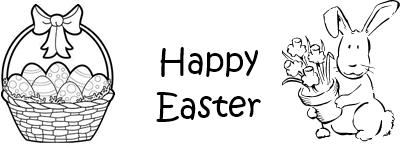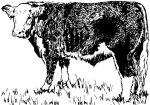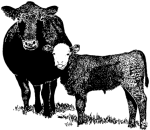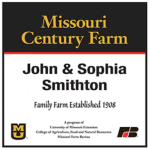

To send a message to an author, click on the author's name at the end of the article.
This Month in Ag Connection | Ag Connection - Other Issues Online
Warm-season grasses can prove to be a valuable forage asset for livestock producers in Missouri, providing high-quality forage during the summer slump period when cool-season grasses are less productive and take longer to recover from grazing. Many warm season grasses are drought and heat tolerant, and some offer great wildlife habitat once established. Leveraging warm-season grasses can reduce reliance on costly commercial feeds and enhance pasture productivity by extending the total number of days per year cattle have access to high quality forages to graze.
The most cost-effective way to feed cattle is typically a pasture-based system. When considering warm season forages as part of a permanent pasture in a rotational grazing system, a quarter of the acres in the grazing rotation will often supply enough forage to meet cattle needs, assuming pasture acreage allotments align with sound management intensive grazing practices. There are several key management strategies that must be understood and implemented for warm season forages to perform well in a forage production system.
Understanding the dynamics between warm season forage production and the soil is vital for optimizing pasture productivity. Soil texture, structure, and pH all impact pasture productivity potential. Soil texture affects water retention, infiltration, and drainage, as does structure. Typically, the more sand concentration there is in a given soil, the lower the water retention, the greater the infiltration rate, and the greater the drainage rate, along with more moderate nutrient availability. Heavier clay soils will have more reduced drainage and infiltration rates, but higher retention rates along with higher nutrient availability.
A balanced pH in the range of 6.0-7.0 will maximize nutrient uptake by warm season forages due to maximizing essential plant growth nutrient availability in the soil. Soil texture, structure, pH, drainage classification, and fertility levels should always be taken into account when making forage choices for haying and grazing production. Regular soil testing every 2-3 years ensures fertilization and lime applications meet the specific needs of the forage(s) being grown. Phosphorus and potassium should be applied at planting or greenup, according to soil test recommendations. Split applications of nitrogen can provide benefits for warm season forage production.
Once there is a good understanding of the soil dynamics of a specific field site, considerations can then be made for what warm season forages will do well in the growing environment the producer faces. Missouri's climate is ideal for growing several different species of warm season grasses, including both perennials and annuals. For example, big bluestem and switchgrass are excellent for drought tolerance and long-term pasture systems, while sorghum-sudangrass hybrids and pearl millet are good for rapid biomass production during hot, dry summer months and offer additional forage production in cool season forage pastures during drought emergencies. When utilizing warm season annuals like sorghumsudangrass or pearl millet, pay close attention to when grazing can start and needs to stop. Grazing typically will not begin until these forages have reached at least 18 inches in height and will stop when forages are grazed to eight inches. These two species are known nitrate accumulators, particularly when drought stressed and sorghum-sudangrass also produces toxic levels of prussic acid during drought and cold stress (frost). Utilizing a no-till drill is beneficial when planting warm season forages, as it conserves field soil moisture and reduces fuel costs during establishment.
Planting of warm season forages should occur in late spring or early summer for optimal establishment results. Do not incorporate legumes until the following year to avoid competition from introduced (non-native) legumes and provide more weed control options, especially during the first six to eight weeks of establishment growth. For effective weed control in warm season pastures to occur, a combination of cultural practices (e.g., grazing management (grazing height and rotation)), mechanical methods (e.g., mowing), and when necessary, chemical herbicides are recommended. Typical height in common perennial native warm season forages to start grazing livestock is 12 inches with a stop grazing height of six to eight inches. When cutting for hay, the typical forage growth stage target is the boot stage. There is a lot of species variability in grazing height restrictions, so careful attention should be made when developing a grazing strategy and choosing forages to establish.
Once legumes are established, weed control options are more limited. Alfalfa is a particular strong choice if drought tolerance is of concern, but keep in mind poorly drained locations will lead to poor establishment and stand persistence. Other good choices include legumes like annual lespedeza and white clover. White clover does not have good drought tolerance, but if using in a mixture with annual lespedeza, there are some options for weed control. Of the three legume species mentioned in this article, Alfalfa and annual lespedeza's growth curves both match closest to warm season grass growth curves. Legumes can negate the need for nitrogen application to an extent, but it should be noted that generally a stand density of at least 30% is needed to meet nitrogen demand, and nitrogen supplied is also legume species dependent.
Mitigating the effects of Missouri's frequent hot, dry summers, and droughts require careful planning.
Farmers should choose drought-resistant forages when selecting warm season grasses to sustain livestock during drought conditions. In conclusion, effective management of warm season grasses involves selecting appropriate species, maintaining soil health, using proper fertilization practices, and implementing rotational grazing. Integrating legumes into pasture systems further enhances forage quality and reduces costs. By carefully planning and managing these elements, Missouri's livestock producers can optimize pasture productivity, reduce feed costs, and increase profitability, even during challenging growing conditions.
Additional Resources:
Source: Nick Wesslak, Field Specialist in Agronomy
This Month in Ag Connection | Ag Connection - Other Issues Online
University of Missouri Extension released new information and a tool for feeding cattle. Most Missouri cattle feeders background, finish or add weight to cull cows to increase the revenue of a cowcalf operation or to be involved in the cattle industry without owning a cow herd. Beef feeders need records for feed, vaccines, livestock risk protection (LRP) insurance cost, buying price, death loss, interest and more variables. Software to track these variables can be expensive. There is now another choice, the University of Missouri Extension Beef Feeding Profitability Tracker.
The tool offers cattle feeders a way to track financial and production performance for any type of beef feeding operation where animals are sold by weight. (Note: It is not designed for cow-calf or seedstock operations.) The tool is available at no cost but requires the software Microsoft Excel and can be downloaded at https://tinyurl.com/MU-BeefTracker. In addition to the tool, MU Extension has a new guidesheet which goes along with the tool titled Beef Feeding Profitability Tracker, and can be found online at https://tinyurl.com/MU-BeefTracker-G462 or contact the local MU Extension Center. The guidesheet provides examples.
The tool has a printable record sheet to use when cattle are initially processed to gather the data at the chute, then later enter into the spreadsheet. The form is designed to record tag number, incoming weight, second round weight, and two treatments (date, weight and product used).
The financial output provides profit-per-head analysis of the enterprise profitability. In addition, it includes financial metrics:
Break-even price - is the minimum price the animal must sell for to cover all expenses.
Cost of gain (COG) - is the dollars spent to produce a pound of gain. [COG = expenses /weight gained]
Value of gain (VOG) - is what the market paid for each pound the animal gained since purchase. [VOG = (sales price - purchase price) / pounds gained]
Return on investment(ROI) - is a profitability metric used to evaluate how well an investment performed. [ROI = net profit or loss / cost of the investment x 100]
The tool also provides average daily gain (ADG), which is a measurement of the average daily body weight changes of an animal over a specific amount of time. [ADG= (final weight - initial weight) / days fed]
A benefit of the tool is keeping the records separate for different lots of cattle. The spreadsheet tool and the guidesheet go well together explaining the data needed. The spreadsheet is built with a navigation menu to cover the areas (animal information, feed ration builder, feed summary, veterinary, individual animal treatments). Also included are feed and a yardage calculator.
In summary, both the guidesheet and the spreadsheet tool are resources to help beef feeders. The year-end comparison on feed, financials and summaries for the different lots is calculated. Producers can then analyze the data to make better informed decisions.
Source: Mary Sobba, Field Specialist in Ag Business

This Month in Ag Connection | Ag Connection - Other Issues Online
Breeding season for spring calving herds is in the not too distant future. Below are a few items to consider before breeding season arrives.

The first order of business is to schedule a breeding soundness exam for the bulls. If an issue with a bull is discovered, there is time to find a replacement. Take time to review weaning weight records or other production records to determine areas needing genetic improvement and search for bulls that improve those areas.
Pay close attention to the body condition score (BCS) of the cow herd after calving. Science tells us that cows in adequate body condition (BCS of 5 or greater) are likely to breed and conceive earlier in the breeding season. This translates into heavier weaning weights, and in the case of replacement heifers, females that are also more likely to breed early and ultimately be more productive in their lifetime. If you need supplementation after calving, be sure to start soon enough so cows are in adequate body condition at breeding.

The impact of earlier calving dates is shown in data from an on-farm trial conducted by MU Extension in northwest Missouri. At one location, steer calves born during the first 21 days of the spring 2020 calving season were 47 pounds heavier at weaning than calves born during days 22 to 42 of the calving season. Recording birth dates of calves is one of the simplest and most useful pieces of information that can be collected.
If cows have calved early enough in the calving season and are in adequate BCS, producers may consider synchronizing cows for either AI or natural service. These tools can help bunch calves toward the beginning of the calving season so the benefits of early calving can be realized.
Another interesting aspect of the NW MO data is cow weight. A total of 485 head of cows were weighed for this project during 2020. The average weight of the cows was 1,229 pounds, but the weight breakout was as follows:
21% weighed between 700 and 1,099 pounds
64% weighed between 1,100 and 1,399 pounds and,
15% weighed between 1,400 and 1,799 pounds.
Knowing the weight range in an individual cow herd helps ensure adequate feeding programs are in place to keep the herd at the target breeding BCS. Cow weight also directly impacts proper stocking rates which affect pasture productivity and persistence.
There are a lot of moving parts in having cows breed and calve in a timely manner. If you have questions on any of these topics, contact the local MU Extension Field Specialist in Livestock.
Source: Gene Schmitz, Field Specialist in Livestock
This Month in Ag Connection | Ag Connection - Other Issues Online

In 1976, the Centennial Farm project was initiated in Missouri to award certificates to persons owning farms that had been in the same family for 100 years or more. Missouri Farm Bureau joined as a program co-sponsor in 2008. This program has been sustained as a yearly event with over 100 farms recognized each year.
To qualify for this year's Missouri Century Farm Program, a farm must have been owned by the same family for 100 years as of December 31st of this year. The 100 years must be consecutive. This lineage can be through children, grandchildren, siblings, nieces, nephews, including through marriage or adoption. The farm must include a minimum of 40 acres of the original land purchased by the family, and it must make a financial contribution to the overall farm income.
Applications and details can be found at https://extension.missouri.edu/programs/century-farms. Deadline is May 1, 2025.
For more information contact your local MU Extension Center.
Publishing Information
Ag Connection is published monthly for Northeast and Central areas of Missouri producers and is supported by the University of Missouri Extension, the Missouri Agricultural Experiment Station, and the MU College of Agriculture, Food and Natural Resources. Managing Editor: Mary Sobba.